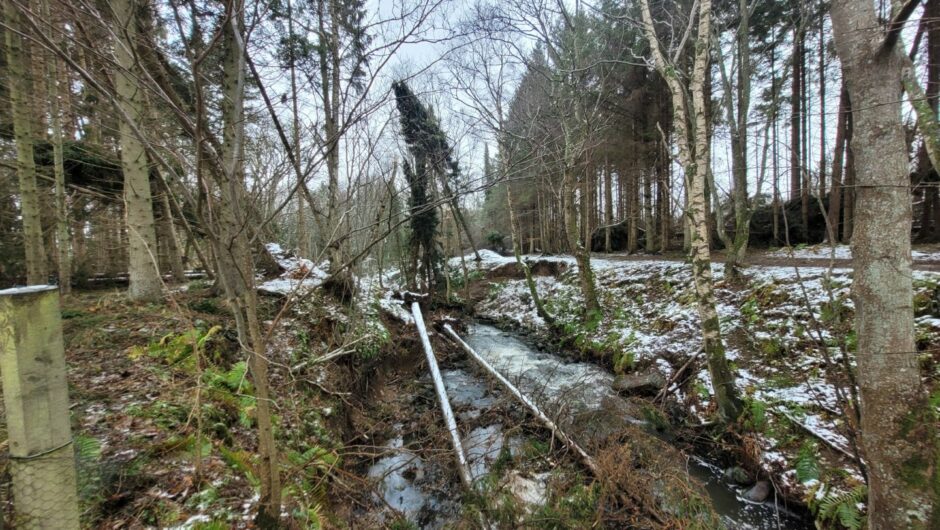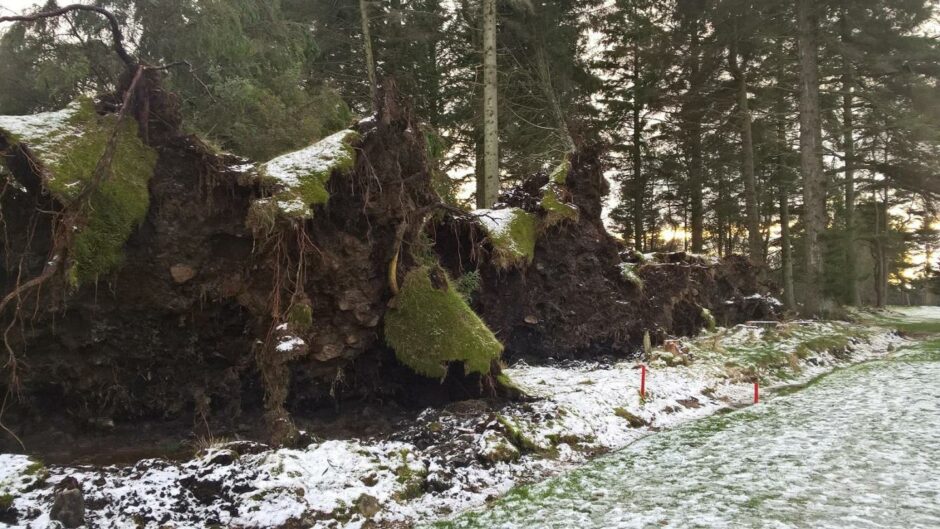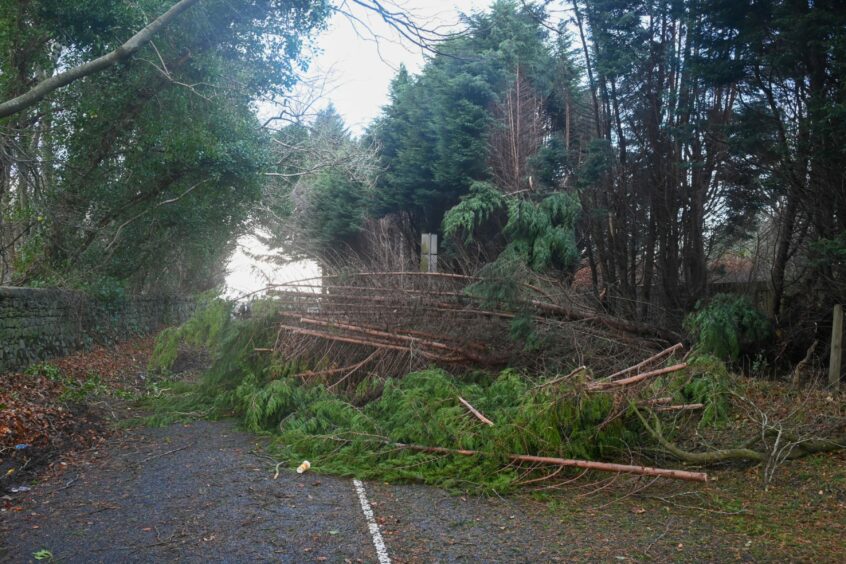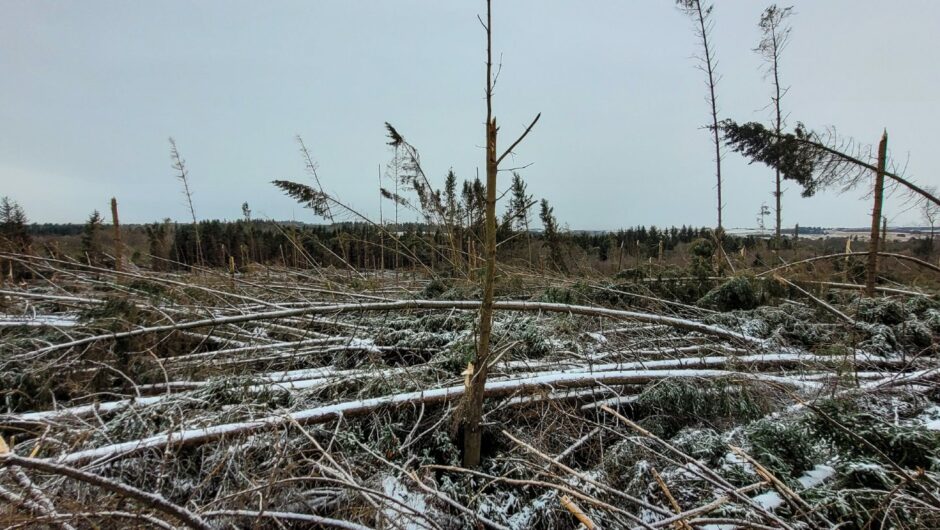An estimated 800,000 trees were blown over or severely damaged by Storm Arwen at National Trust for Scotland sites across the country, with the worst of the damage in the north-east.
The extreme winds toppled woodlands and forests all across Scotland and Scottish Forestry is still working to fully assess the impact using methods such as satellite data.
A spokesman for the National Trust for Scotland (NTS) said the weather caused widespread destruction at the conservation charity’s sites, and its staff have been “working flat out in the aftermath”.
Where was the worst of the damage?
The NTS cares for all kinds of places and locations, including castles, coastlines, gardens and rural estates.
The trust spokesman said the loss of trees in the north-east of Scotland has been the most devastating, and that staff had “never seen anything like it”.
He said: “The most significant level of damage has been to woodlands and forestry in the north-east especially.
“Some sites lost as much as 60% to 70% tree cover.
“This has caused some restrictions on access to some sites while fallen and partially fallen trunks were removed, but most trails are already open.”
Sadly, many of the trees destroyed by Storm Arwen were very old, including some that had been growing for more than a century.
Some of the worst damage was inflicted at the trust’s historic estates.
Around 100,000 trees were lost at the NTS’ Haddo House and Country Park.
The NTS spokesman added: “The worst affected locations include the estates around Fyvie, Crathes and Drum castles, with the loss some of the largest trees that edged the driveways, which pulled up tarmac as they fell, and the loss of several trees that were 100 years old and older.”
Storm Barra, which hit Scotland soon after Arwen, did not cause as many trees to fall down.
The NTS believes that the ones that were going to come down had already fallen to Storm Arwen.
What’s going to happen to all the trees?
The NTS spokesman said some of the timber can be sold, some mulched, and where it’s appropriate and safe, fallen trunks can be left to rot.
The rotting trunks will provide habitats and food to insects, fungi and other plant species.
Scottish Forestry said much of the fallen trees across Scotland will be used by wood processors and merchants and will be used as normal.
Will this impact the fight against climate change?
Trees are an important tool in Scotland’s fight against climate change, as they soak up carbon from the atmosphere.
Doug Howieson, from Scottish Forestry, explained that the loss of trees from Arwen thankfully won’t have too much of an impact on Scotland’s carbon targets, as the carbon sequestered by the trees will remain “stored” in their wood.
He explained: “These storms will not affect our carbon targets because the timber that has been blown down is fully utilisable and will lock up stored carbon in the wood, depending upon how it’s used.
“At the same time, the areas that have been felled will be replanted and will begin to soak up carbon from the atmosphere again pretty quickly.”
When will we know the full scale of the damage at a national level?
Doug continued: “We are working with Forestry and Land Scotland and the private sector to fully assess the impact on Scotland’s forests and woodlands made by Storm Arwen.
“In the coming weeks we should have better data from satellites which can give us an accurate picture of where the damage has occurred and how much in terms of volume.
“It is clear though, that the north-east and Scottish Borders have been most affected.”
He added: “The advice to the public at the moment is to stay away from the forests and woodlands that have been affected by the storm.
“It may take a long time for woodland managers to make them safe again”.
How you can help the NTS restore its lost trees
The NTS has launched an appeal to help raise funds to replace the trees in affected forests and woodlands at its sites.
The spokesman for the charity said it will take “much effort and many years” to replace what was lost.
You can donate by clicking here.





